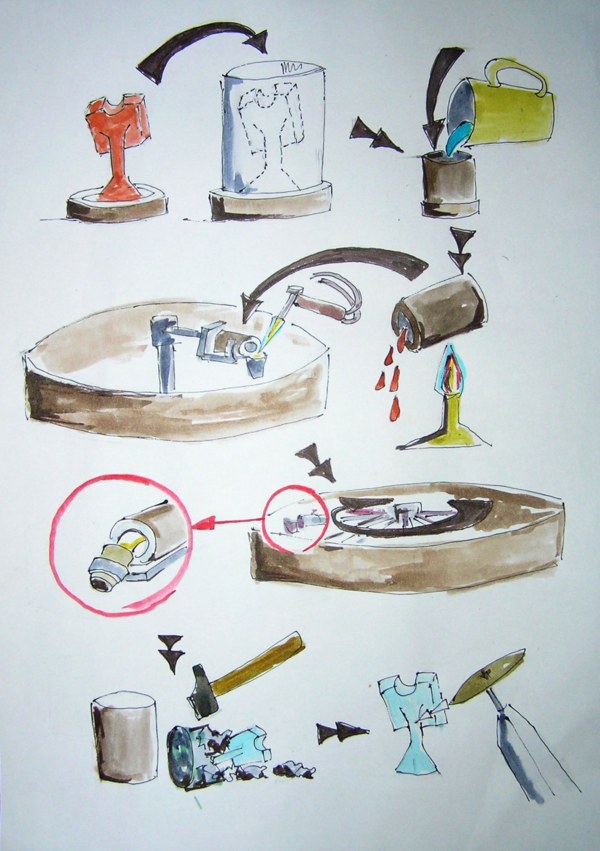86966, Lost-wax casting (cire perdue)
Послано guest, 10-09-2012 09:47
т.е. отливка методом утечки, вытеснения воска. Ссылки и картинки:
http://en.wikipedia.org/wiki/Lost-wax_casting
http://collection-of-indonesian.blogspot.com/2011/08/cire-perdue.html
A Cire Perdue is a bronze-making techniques beginning with the making of metal objects from wax, which contains clay as its core. candle shape is decorated with various ornamental patterns. form a complete candle wrapped again with the soft clay. at the top and bottom of a hole. from the hole above the liquid bronze is poured, and from the bottom hole of melted wax flows. when the bronze is poured cool,
the mold is broken down to pick up the finished object. Prints like these can only be used once only.


http://jfbradu.free.fr/celtes/tresor-neuvy/cire-perdue.htm

есть ли здесь параллели с "распятием Христа"? Гвоздь, забиваемый в лодыжку/пяту Ахиллеса-Талоса. Вытекание воска - кровь агнца? При этом нагревание-"мучение" жаром-"солнцем". Оболочки - "гробница-пещера". При этом одна природа (восковая, "смертная") вытесняется другой (металлом, бронзой и т.п., т.е. "бессмертной"). В конце глиняная оболочка разбивается. Кстати, по библии, древние евреи именно поклонялись своему золотому идолу-тельцу.
как пишут, в Индии якобы когда-то очень-очень давно отливали этим методом богов, святых и быков:
http://en.wikipedia.org/wiki/Lost-wax_casting#Lost-wax_process_in_archaeology
Metalcasting began in India (now Pakistan) around 3500 BC in the Mohenjodaro area,<14> which produced earliest known lost-wax casting, the Indian bronze figurine named the “dancing girl” that dates back nearly 5,000 years to the Harappan period.<14><15> Other examples include the buffalo, bull and dog found from Mohenjodaro and Harappa,<1><15><18> two copper figures found at the Harappan site Lothal in the district of Ahmedabad of Gujurat,<14> and likely the covered cart with wheels missing and a complete cart with a driver found at Chanhudaro.<1><18> ...Gold and copper ornaments, apparently Hellenistic in style, made by cire perdue are found at the ruins at Sirkap. One example of this Indo-Greek art dates to the 1st century BC, the juvenile figure of Harpocrates excavated at Taxila.<14> Bronze icons were produced during the 3rd and 4th centuries, such as the Buddha image at Amaravati, the images of Rama and Kartikeya in the Guntur district of Andhra Pradesh.<14> A further two bronze images of Parsvanatha and a small hollow-cast bull were come from Sahribahlol, Gandhara, as well as the standing Tirthankara (2nd, 3rd century AD) from Chausa in Bihar.<14> Other notable bronze figures and images have been found in Rupar, Mathura (in Uttar Pradesh) and Brahmapura, Maharashtra.<14>
|


